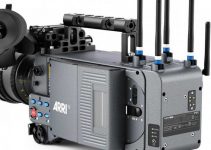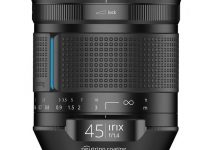Many of the most recent cameras on the market, even the cheap and affordable ones, have been breaking the wall of 4K recording. Higher-end cameras have already been shooting 8K for a while, we have 8K TVs appearing on the market, and Canon has just confirmed that the (still in development) EOS R5 will shoot a full sensor readout in 8K.
It seems that 8K is approaching faster than we could imagine, and we should prepare for it. But shooting in 8K does not mean only that we have to upgrade our cameras. Our whole workflow needs to get nice lifting as well. That includes our cards, our editing stations, and, last but not least, our hard drives. Because “With great resolutions comes great need for drive space”, right? Puns aside, let’s get a grip of what’s expecting us right behind the corner and follow the guys from ProAV TV as we talk storage space and 8K recording.
At the moment, the only real camera that we can get our hands on to talk about 8K recording is made by RED and has the famous MONSTRO 8K VV sensor. Now most folks out there reasonably would think that recording an 8K 16-bit Raw file could bear a humungous amount of data. That is partially true.
Even if the amount is not that overwhelming, it’s still not as much as you’d expect, and that’s thanks to R3D, the highly efficient RED RAW codec. Most filmmakers that haven’t been working with such cameras do not know that they can compress the files up to a 22:1 ratio. Not bad, uh?
This has been the secret weapon that made the RED ONE possible long ago and now makes it feasible to have 8K files. Depending on the kind of project, and most of all on its budget, you’ll have the correct compression ratio to choose from.
When shooting the Avengers or any other ultra-high-end blockbuster you’ll shoot in 2:1, and instead, if shooting a clip that goes straight on your Instagram feed you’ll keep the ratio high, so to have a decent amount of disk space.
If you read on the following table, the amount saved is quite a lot, we’re going from 25min to 1h 40min of recording on a 1TB card, and it’s not even that noticeable.
Consider that Netflix sets the limit for its Originals to 8:1 compression.
But that is RED. How is life outside of the golden gates of Irvine, California? Well, not so bright it seems. Going through all other manufacturers, we can’t find a comparable size effective recording. Data rates are consistently higher, even if on smaller resolutions or various formats.
What does that mean? Well it’s a testament to the great work RED has been doing from day one on its compression algorithms, but it also clearly states in what field the game needs to be played in the future: codecs. The development of a viable codec, efficient just as RED RAW, and with the same quality, is of the utmost importance if the other camera makers want to keep up the game in the near future.
[source: ProAV TV]
Disclaimer: As an Amazon Associate partner and participant in B&H and Adorama Affiliate programmes, we earn a small comission from each purchase made through the affiliate links listed above at no additional cost to you.



